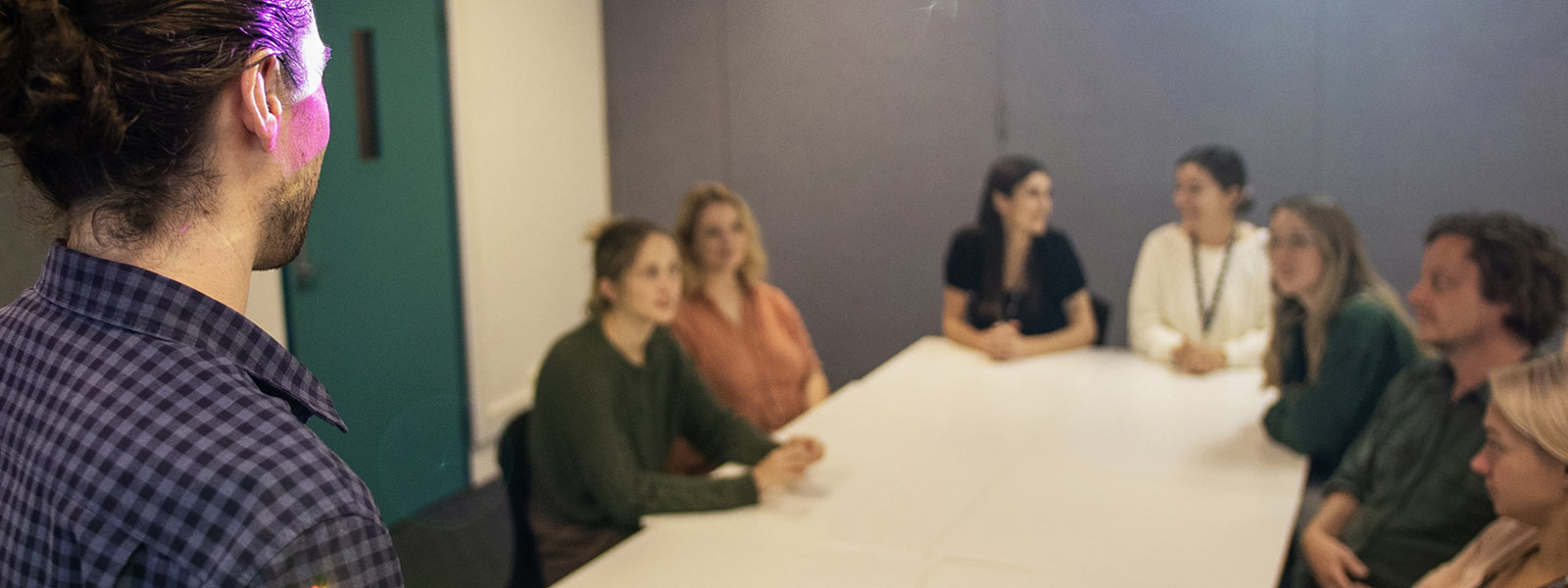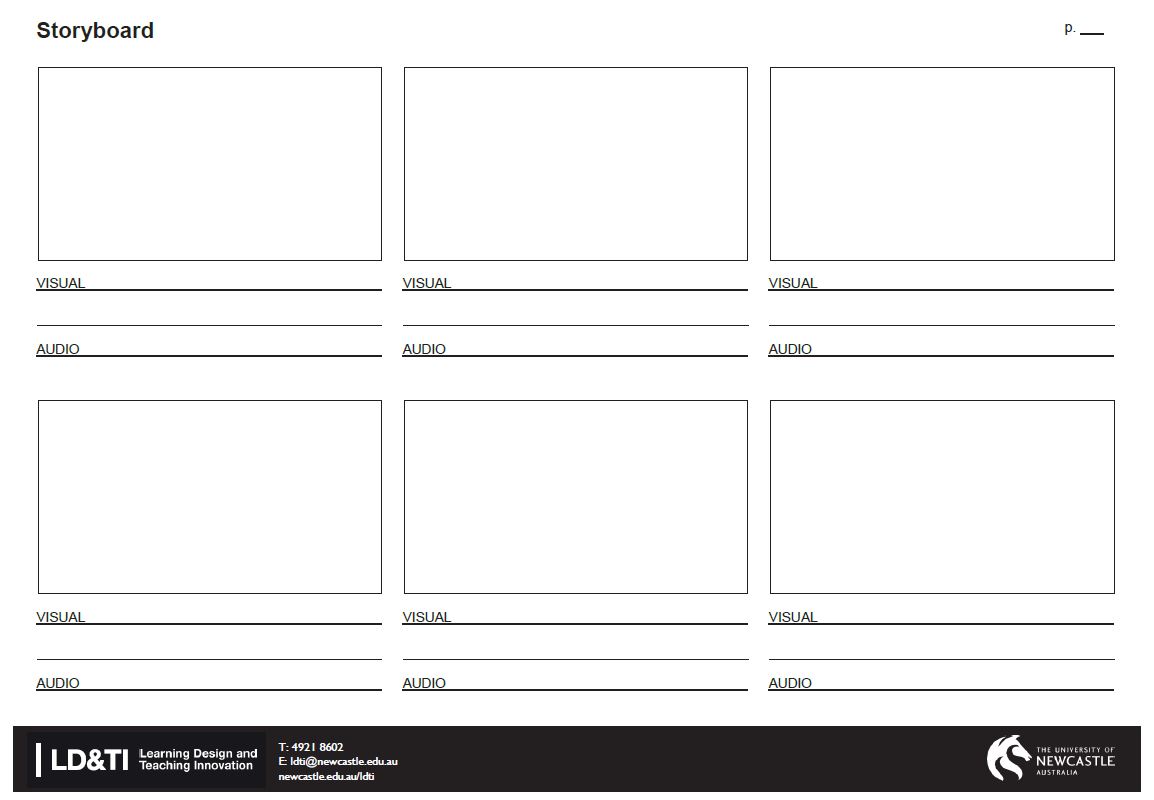
Learning Design and Teaching Innovation
What is it?
Storyboards are graphic organisers to allow students to visualise a movie, animation, project, process, campaign, etc. Storyboarding is a useful active learning strategy for engaging students with a narrative, timeline or audio/ visual project.
Why use it?
It allows students to develop and preview a step-by-step process, such as a story, workflows, camera angles for a film, words of a character, product design intent etc. Storyboards could be used to:
- plan a video production
- write a story/script
- plan a process/experiment
- develop a marketing campaign
- schedule a project or research
- plan a presentation
- design how a product works
- design a service
- explore differences in techniques
How does it work?
Students roughly draw a scene or a step in a technique or process. If working on a computer the students might use drawing tools, clip art or photographs instead of hand drawn scenes. Above or underneath each scene, notes can be made with dialogue or a description.
Activity
Give the students printed blank storyboard templates to complete. Have plenty of spares. Using the visualizer, students can take turns to share storyboards with the class.
Storyboard Template
Acknowledgement
This resource is based on the “Not a waste of space” project materials produced by RMIT University and the University of Melbourne, with the support of the Australian Government Office for Learning and Teaching. Used under a Creative Commons Attribution-ShareAlike 3.0 Unported License. Except where otherwise noted, this content is licensed under a Creative Commons Attribution-ShareAlike 4.0 International License.
The University of Newcastle acknowledges the traditional custodians of the lands within our footprint areas: Awabakal, Darkinjung, Biripai, Worimi, Wonnarua, and Eora Nations. We also pay respect to the wisdom of our Elders past and present.

